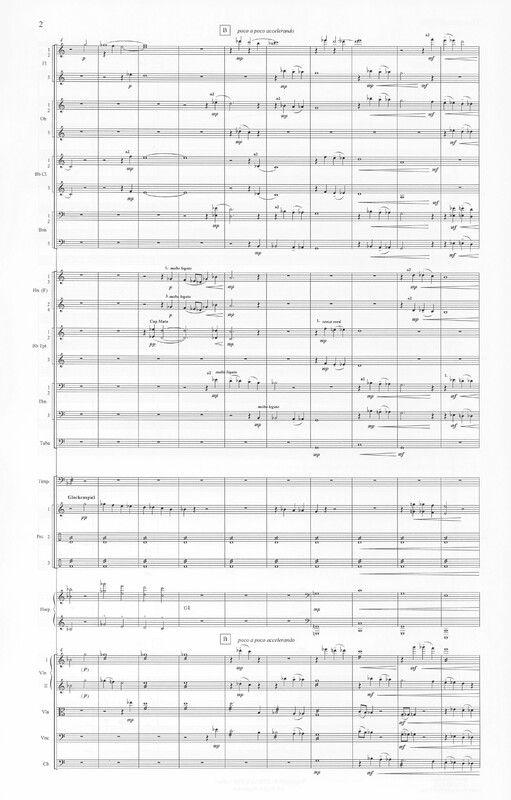Bach 358
Item
-
Score title
-
Bach 358
-
Composer
-
Libby Larsen
-
Program note
-
We are all Bach. Every kid who has pinged a fork on a wooden table or stroked the rim of a crystal glass until it hums; everyone who has ever drawn a right angle; everyone who has ever looked at, entered into, or lived in a four-sided structure; anyone who has whistled a single note or sung a single pitch; every person who has ever listened to music, any kind of music; every member of a church choir; every person who has ever sung a hymn or chanted—all of us. Why? Because the air is awash with sound waves and while our feet are moored to the ground, our ears are adrift in the ocean of air, picking up the natural physical vibrations of the world as they exist in the sound wave ratios of 1:1, 1:2, 2:3, 3:4, and so on. Translate these ratios into audible sound and your ears hear unisons, octaves, fifths, fourths, thirds, or do (1), sol (5), fa (4), mi (3), and so on.
Now, ARE we all Bach? Well yes, and most certainly, no. Yes, in that living beings experience the air as Bach did in its natural physical sense; and certainly not, since most of us are not trained musically to translate what exists naturally in the air into audible shapes which we recognize as “music.” And of those of us who are trained composers, if you will, none of us are Bach either. We composers translate the air into pieces of music which draw upon our own experiences of being alive.
For Bach, the unison (1), octave (1:2 or 8), fifth (5), and the third (3) were audible realization of the mystic qualities of Divine Order. Working with these naturally audible ratios he created what is arguably one of the greatest musical oeuvres in Western culture.
Bach 358 is an homage to J.S. Bach. The piece opens with a solo oboe playing “The Royal Theme.” This theme was devised by Frederick the Great and presented to J.S. Bach in 1747 as a challenge to Bach’s supremacy as master of “old style” counterpoint. In 1747, music in Germany found itself at a crossroads not dissimilar to the crossroads music finds itself today. At the crux of the argument lies a question: what is the purpose of music itself in the culture at large? Answer this question and you answer something abstract yet deeply essential in understanding how a culture wishes to view itself. In 1747, German culture lay at the crossroads of the Age of Reason and the Romantic Era or, musically speaking, at the crossroads of music that values reason and prefers discipline, order, and control and music that values feeling and prefers passion, individuality, and spontaneity.
My piece Bach 358, an overture, is a rumination on this crossroads and an homage to audible mysticism and Bach’s brilliant musical language as realization of this belief.
 Libby Larsen
Libby Larsen

